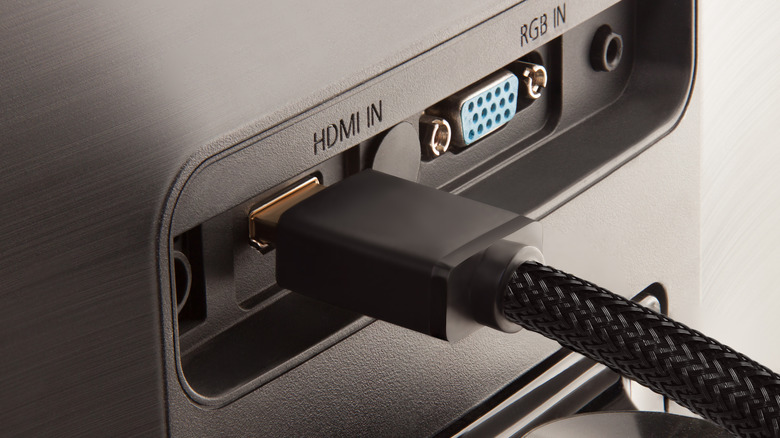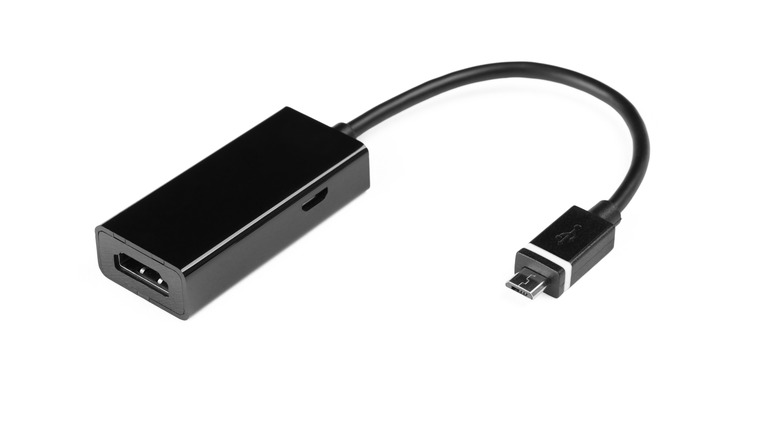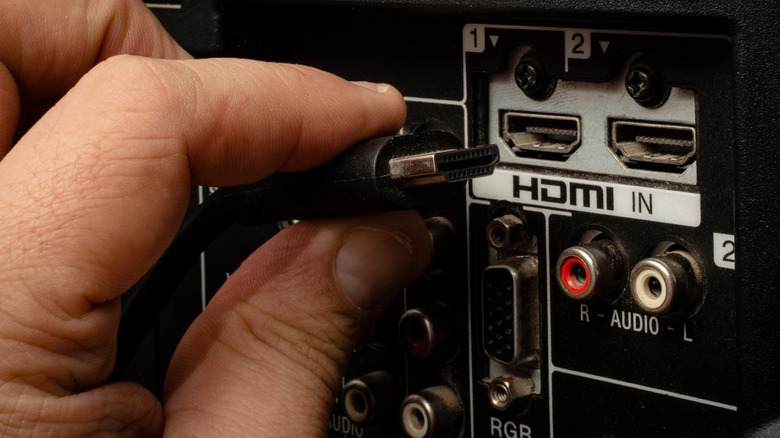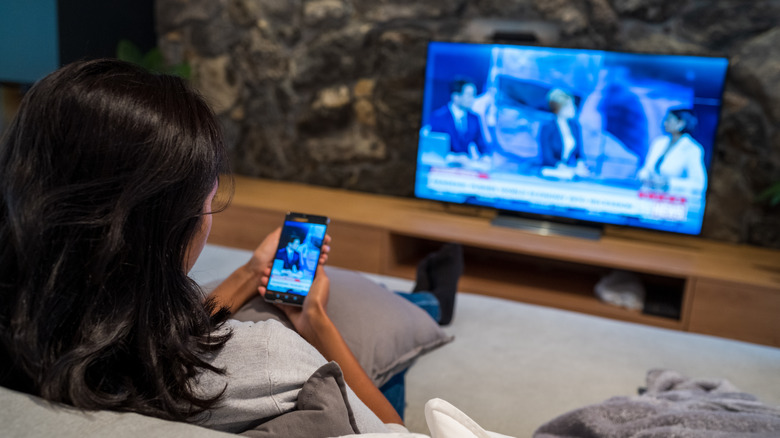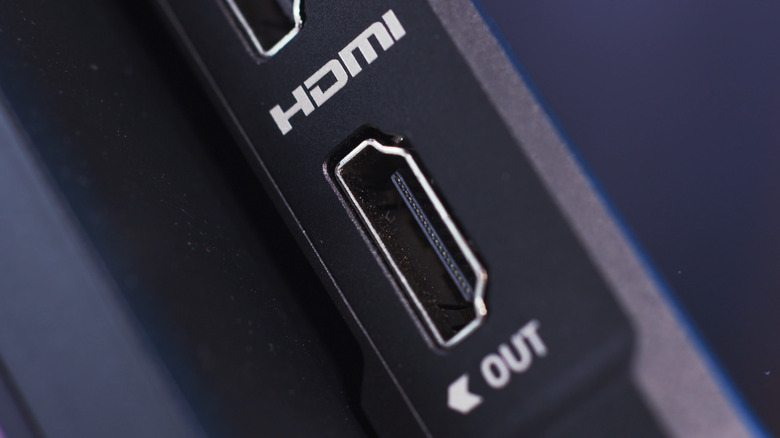What Is MHL HDMI, Explained (And When Do You Use It?)
Many modern TVs feature a built-in screen mirroring option that allows you to cast content from your smartphone to your TV. But if you're unable to cast wirelessly, there is an older technology that allows you to connect your mobile to your TV effortlessly. Since its entrance into the industry in the early 2000s, HDMI has grown into a staple piece of technology for homeowners and offices. Designed to improve upon previous technologies like DVI, HDMI is now the de facto standard for transferring video and audio signals. With the latest version, HDMI 2.1, boasting 10K support and a maximum bandwidth of 48Gbps, it's easy to see why HDMI is commonly used.
In 2010, several tech companies joined forces to create a new protocol for HDMI named MHL. The new technology was invented as a way to cast content from a mobile device to a TV display through a single connection. Though it's now a relatively old technology, there are still many benefits of using MHL over wireless casting. With an MHL-certified HDMI cable and a compatible smartphone, you're ready to go.
What is MHL HDMI?
MHL, short for Mobile High-Definition Link, is designed to connect mobile and tablet devices to an HDTV or A/V receiver. The technology uses a five-pin connection (versus HDMI's 19-pin configuration) and is capable of casting content at a 4K resolution or greater (depending on which version of MHL you use). With an MHL connection established, you can view photos, watch videos, and play music from your smartphone or tablet on your TV.
As well as its casting abilities, MHL technology is also capable of charging compatible devices, with Power Delivery capabilities of up to 10 watts. The MHL protocol supports a maximum bandwidth of 6 Gbps with zero latency, making it an ideal alternative option to wireless casting if you have a poor Wi-Fi connection. It's important to note that as MHL is a fairly old technology, some modern TV manufacturers may no longer support the technology. However, being included in over 900 million devices to date, MHL is a solid alternative to wireless casting that offers a cheap, straightforward setup.
Are there different types of MHL connections?
MHL was introduced in June 2010, with version 1.0 supporting up to 1080p resolution and a 7.1 surround-sound audio system. The technology was built by various tech companies, including Sony and Nokia, looking to bring an easy and efficient casting solution for mobiles and TVs. The technology saw its next upgrade, MHL 2.0, in April 2012.
While the first version was capable of powering devices (to prevent them from losing battery while casting), version 2.0 now supported device charging from 4.5 to 7.5 watts. The following upgrade, MHL 3.0, was released in August of the following year. Rivaling its previous versions, MHL 3.0 offered 4K resolution, power delivery of up to 10W, and backward compatibility with MHL 1.0 and 2.0 hardware.
With wireless casting making its way to the market in late 2012, MHL had to offer something special to stay in the marketplace. SuperMHL was released in early 2015, boasting an array of impressive specs. As the newest version, SuperMHL supports 8K video footage at up to 120fps. It also supports surround sound systems such as Dolby Atmos and its competitor DTS:X, and it delivers Power Delivery of up to 40W.
When should you use MHL HDMI?
With wireless casting options available on nearly every modern smartphone, you might wonder, what's the point of using MHL anymore? Apple fans can enjoy AirPlay, allowing users to stream content to a TV using an iPhone, iPad, or Mac. However, not all TVs are compatible. Miracast is a popular alternative option for Android users introduced in 2012, and it's now available on most Android smartphones. But if you've tried Miracast before, you'll know it's fairly inconsistent. In addition, both AirPlay and Miracast depend on a stable internet connection, so you may encounter lag among other issues if your internet isn't up to scratch.
Offering zero latency, you can depend on MHL as the most reliable casting method. It doesn't depend on your internet connection, so you can cast even when your internet is down. It also uses less power than wireless casting (in addition to its charging abilities), which is ideal for watching long movies. MHL is a great option if one of your devices doesn't support other wireless casting options. With resolution support of up to 8K, you're guaranteed the best quality without needing to worry about your Wi-Fi signal strength.
How to use MHL to connect a device with your TV
To connect your phone or tablet to your TV with MHL, you'll first need to check your TV supports an MHL-enabled HDMI port. You can tell if your TV supports MHL by looking for the label "MHL" on the HDMI port. If your TV doesn't support a MHL connection, you'll need to use a HDMI-to-MHL adapter, which can be purchased online. If both devices support MHL, you can skip the adapter and connect your devices using an MHL-enabled Micro USB-to-HDMI cable. First, attach the Micro USB connector to your smartphone. Then, use any MHL-enabled HDMI cable on the opposite side of the adapter to complete the connection.
If you're using an iPhone, a standard MHL adapter won't work due to the absence of a Micro USB port. Instead, Apple offers a Lightning Digital AV Adapter to connect your iPhone to your TV via a HDMI cable. Of course, if you use an Android or Apple device with USB-C, you can use a USB-C-to-HDMI adapter as a workaround. Though MHL works with a vast array of modern TVs (via a direct connection or with an adapter), there's a small number of models that aren't compatible. If you're in doubt, you can check your device's compatibility on the official MHL website.
